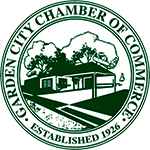Rethinking Workplace Collaboration from the Inside Out
A familiar trap catches many businesses unaware: mistaking more meetings and tools for better collaboration. It’s tempting to believe that simply layering on Slack channels or tossing teams into brainstorming rooms will naturally yield cohesion. But real collaboration doesn’t happen because software is in place or because people sit in proximity. It’s the result of something deeper—shared trust, clear purpose, and the subtle social contracts that guide how people show up for each other.
Start With Atmosphere, Not Structure
The instinct is to fix collaboration with more structure—new processes, new hierarchies, and new policies. But teams don’t thrive because of rigid scaffolding. They come alive in environments where people feel safe to contribute, even when their ideas are half-baked or go against the grain. That doesn’t come from documentation; it comes from the tone leadership sets every day. If employees sense their feedback leads to punishment or apathy, they’ll stay silent. Create an atmosphere where disagreement isn’t dangerous and where failure isn’t fatal, and the rest starts to fall into place.
Design Meetings People Don’t Dread
Collaboration often dies in poorly run meetings. Sessions that drag on, go nowhere, or get hijacked by the loudest voice will eventually crush momentum. Leaders need to treat meetings with as much thought as product launches. That means deciding who truly needs to be there, what the goal is, and how to keep the room focused. Great meetings create shared clarity, expose blind spots, and move the ball forward. Bad ones just burn the clock. Make space for people to contribute meaningfully—without forcing them to fight for airtime.
Keep Document Movement Agile and Frustration-Free
Clean document flow helps keep your team in sync, but only if files are accessible, editable, and clearly versioned. Working with PDFs can become tedious fast, especially when formatting or language updates are needed but editing tools are limited or clunky. In these cases, it’s often more efficient to start in Word, where revisions and formatting changes are easier to control. Once you're satisfied, you can use a simple online tool to convert a Word document to PDF—just upload your file, run the conversion, and save the polished PDF version for distribution.
Kill the Culture of Over-Ownership
Ownership is sacred in most organizations—but over-ownership is where collaboration goes to die. When people hoard responsibilities or view collaboration as interference, progress stalls. No one wants to step on toes, so they step back entirely. That behavior usually doesn’t stem from arrogance; it’s anxiety. Leaders should make it clear that asking for help or offering help isn’t overstepping—it’s part of the job. Normalize the idea that collaboration isn’t a threat to autonomy, but a reinforcement of collective success.
Make Visibility the Default, Not the Reward
In too many companies, visibility feels like a privilege earned rather than a baseline condition. But people can’t collaborate if they don’t know what others are working on. When updates, goals, and progress live in silos, teams operate on assumptions and gossip. Build systems that let work be seen without making people shout. That doesn’t mean endless status reports—it means intuitive dashboards, shared documents, and regular rhythms of open dialogue. When visibility is easy and expected, trust follows faster.
Cut the Competition Theater
Internal competition gets mistaken for drive. But when departments or individuals are pitted against each other, the long-term costs are steep. Turf wars, information hoarding, and performative alignment kill collaboration at the root. What helps instead is creating shared incentives—not just profit-sharing, but also recognition systems that reward team efforts and cross-functional wins. Leaders should stop romanticizing rivalry and start celebrating synthesis. The goal isn't to win meetings or metrics—it’s to build something sustainable together.
Hire for Generosity, Not Just Grit
Collaboration can’t thrive if the hiring pipeline only prioritizes output and hustle. Technical skill matters, but so does generosity: the willingness to listen, help, and share credit. It’s worth evaluating how candidates talk about past teams, not just past results. Did they elevate others? Did they take the time to explain complex ideas to peers? These softer signals often predict whether someone will thrive in a collaborative setting—or quietly sabotage it. A single ego hire can stall entire projects.
What’s often missed in the pursuit of collaboration is that it’s not a checkbox on a strategic plan. It’s not a sprint, a KPI, or a software feature. It’s a muscle that grows in cultures where people trust each other enough to challenge, share, and stretch. It’s shaped by the quiet moments—how leaders listen, how meetings are run, how feedback is received. If companies want collaboration that actually moves the needle, they need to stop treating it as a goal and start treating it as a value. That shift, though harder to measure, is the one that actually lasts.
Discover the vibrant community of Garden City by joining the Garden City Chamber of Commerce and unlock exclusive deals, events, and networking opportunities today!

